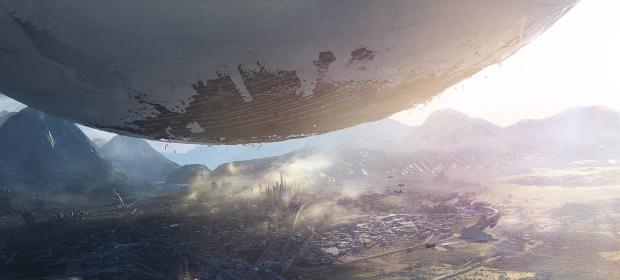Destiny is not Halo. Nor is it Borderlands. Nor is it an amalgamation or bastardisation of either. This is something I feel needs pointing out because Destiny is its own entity and, while it isn’t the game-changing, genre-defining behemoth we were promised, it’s still a worthy achievement on Bungie’s part. A handful of expansion packs, patches, tweaks and updates down the line and it may well come close to that uber-game we so desperately wanted it to be, but right now (when it counts, you might say) Destiny is little more than a tasty meal with a few ingredients missing.
I use a food analogy because that’s what it’s like: it’s like taking a mouthful of something almost delicious and then obsessing for the duration of the meal over what’s making it taste funny. Destiny’s flaws are not all obviously apparent.
As I said in my review-in-progress, the story takes place in the distant future and casts you as a Guardian, an elite warrior tasked with defending the Light of the Traveller, a powerful itinerant entity that boosted human understanding by a few centuries. Having established colonies on a handful of worlds and moons in our galaxy, they were attacked by a mysterious Darkness hell-bent on destroying the Traveller. In the ensuing conflict, known as the Collapse, almost everything was lost, and now they huddle together in one sprawling city under the shadow of a weakened benefactor.
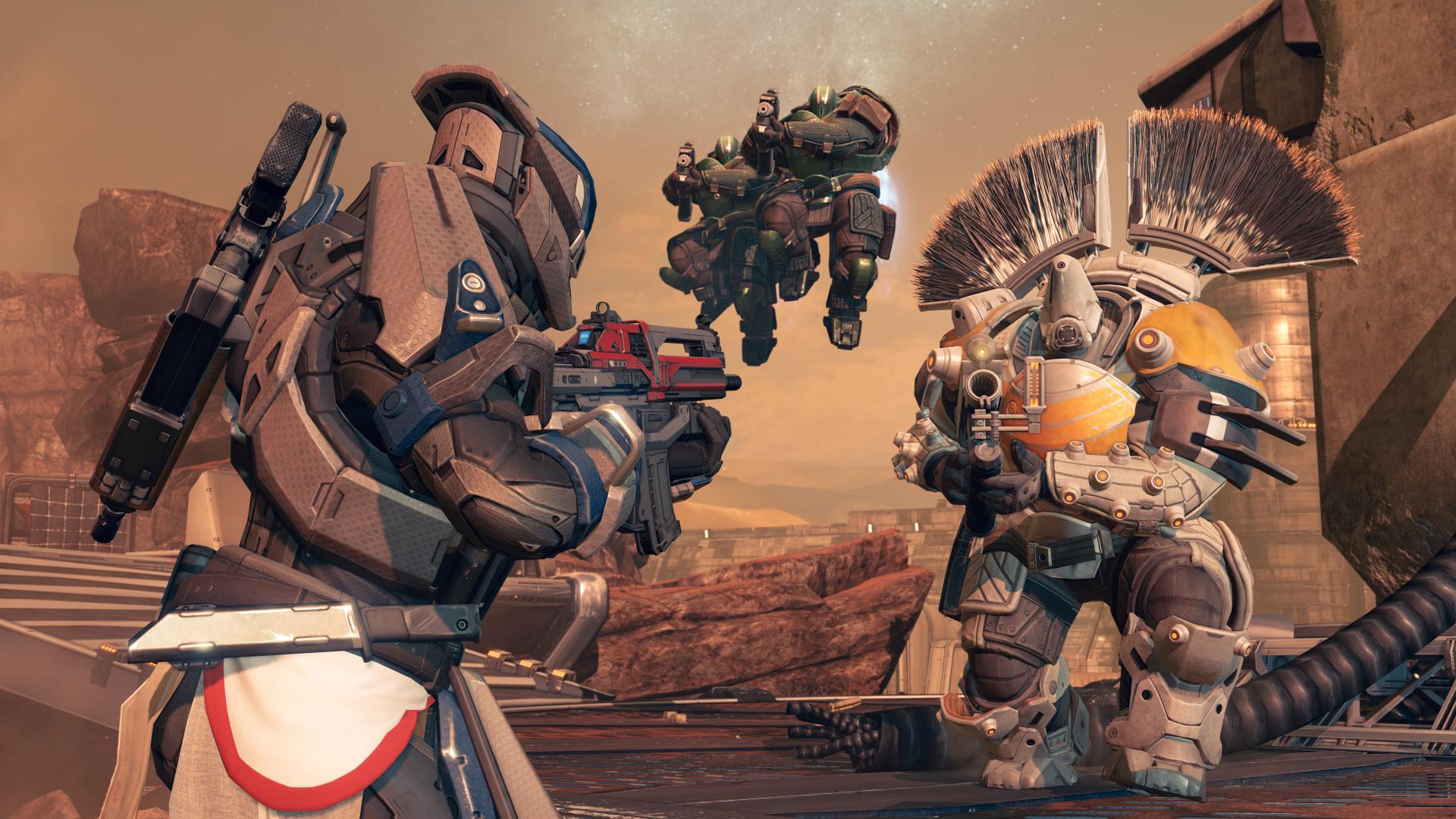
As a set-up it’s delicious. Intriguing. Compelling, even. In practice, however, Bungie squander such a wonderful backstory by locking exposition away on their website. There are no lore entries in-game which, when they’ve gone to such pains to craft a unique game-world, beggars belief. Instead you collect Grimoire Cards that unlock codex entries on Bungie.net. Immediately this robs you of the immersion you – and Destiny’s world – deserve. The wonderful high sci-fi hokum that would (and should) have wrapped us all up tight in its LED-sequinned folds is hamstrung from the outset.
As a result, we’re left scratching our heads as to what the hell a “Mote of Light” is for. We don’t know where the Fallen came from, nor the Vex or the Cabal. We don’t know why there are benevolent races (the Awoken and the Exo) besides humanity. We don’t know how they came to co-exist or why. If we want to know these things, we need to take a break from playing and go read a Wiki. It’s an appalling narrative decision, because without context, all you’re doing is blasting monsters in the face over and over again, while Peter Dinklage’s bored AI Ghost drones on about your objectives in a voice that suggests he’d rather be doing anything else than spouting rhetoric about grumpkins and snarks and wizards that came from the moon.
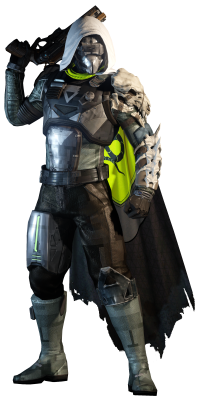 It’s compounded by the fact that Bungie don’t seem entirely sure of themselves. A meeting mid-game with an Awoken Queen makes no sense when you play as an Awoken yourself, as she acts like you’re not. She introduces herself, her race, and makes no mention of your shared lineage. It’s almost as though Bungie only ever had one playable race in mind for Destiny, and added the Awoken and Exo later in an effort to inject some variety. Sadly, the different races and classes don’t add up to much more than aesthetic preference.
It’s compounded by the fact that Bungie don’t seem entirely sure of themselves. A meeting mid-game with an Awoken Queen makes no sense when you play as an Awoken yourself, as she acts like you’re not. She introduces herself, her race, and makes no mention of your shared lineage. It’s almost as though Bungie only ever had one playable race in mind for Destiny, and added the Awoken and Exo later in an effort to inject some variety. Sadly, the different races and classes don’t add up to much more than aesthetic preference.
You’re able to choose a Hunter, Titan or Warlock (basically DPS, Tank and Support), but aside different starting stats and slightly varying abilities, there isn’t enough between them to really force a change of tactics. Having played with all three, I haven’t really been able to select a favourite because they’re all so similar when you get down to brass tacks. My choice is informed purely by the fact that the Warlocks look cooler than the other two. They all have an energy drain skill, a grenade on a cooldown timer, and a super attack. They all have unlockable skills that improve stats and alter the behaviour of their grenades. They all use the same weapons and have the same stats on their armour. Player skill is a major factor, as a talented player can make a Warlock seem just as hardy as a Titan, which means you could have easily had no classes at all, and simply taken your skills down a multi-branching tree.
Playing Destiny, I couldn’t help but feel that Bungie had the concept for a Halo-style, story-driven campaign shooter and added everything else in after one of their suits coughed up the “shared world” idea. It sounds horribly cynical, perhaps, but having spent a full week and well over thirty hours in Bungie’s world (not to mention the countless hours spend in the alpha and beta, too), I can’t escape the fact that all the disparate elements simply don’t marry up as they should. It doesn’t feel organic; everything feels added-on. Such a theory may be unintentionally disparaging, but it explains the unexplained races, it explains the Grimoire Cards, it explains the limited number of game areas and the lack of real difference in the classes.
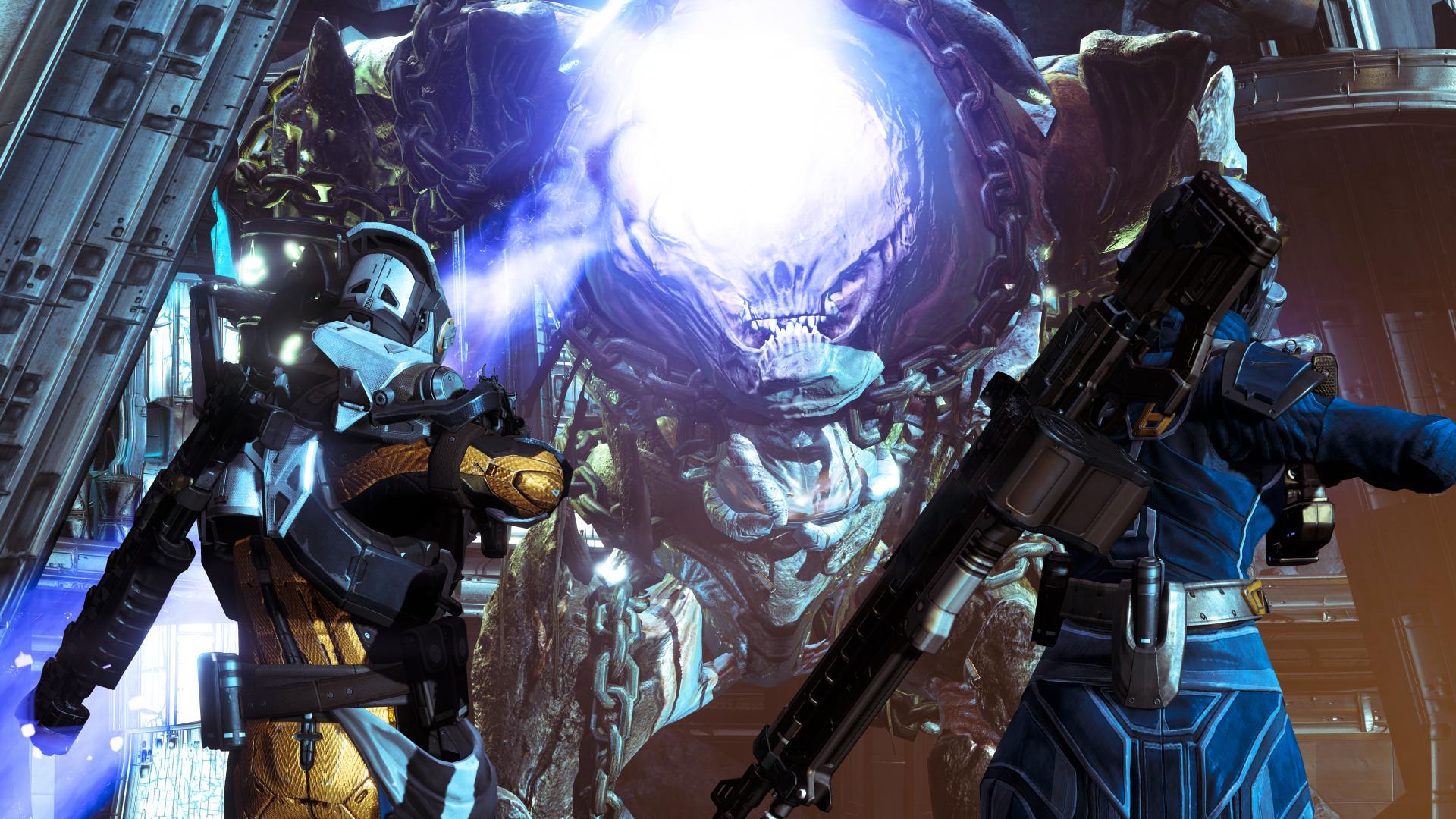
So where’s the flavour? Where’s the taste that makes the meal edible despite its flaws? In the combat, of course – this is a Bungie game after all. Luckily, Destiny’s redeeming feature happens to be its biggest hook and primary mechanic: the gunplay is amazing. Those comparisons to Halo seem petty until you start shooting, and then you remember why Bungie have their reputation. The combat is precise, frantic, balanced, frenetic, and damn satisfying. Enemy AI is as good here as I’ve seen anywhere else, the terrain is crafted as a sandbox battleground; just like Reach’s wide open spaces encouraged you to flank enemies, set up choke points and go vertical to get the drop on them, Destiny’s arenas do the same. Cover is everywhere, though less blatant and idiot-proof than, say, a Gears of War. The double-jump jet-pack skill that every class has allows you to play for height, scaling rocky outcrops and jumping up to balconies that in other games would be background filler.
Guns issue thunder-claps that hammer enemies clean off their feet, heads pop in wisps of smoky vapour, and super-charged blasts of plasma arc from your very palm to disintegrate groups of charging aliens in a glimmering light show that puts inFAMOUS to shame. This is what a shooter should be, and when Destiny hits you with its ground-game, away from all the garbled, half-explained sci-fi posturing, it’s one of the most competent and confident shooters ever created.
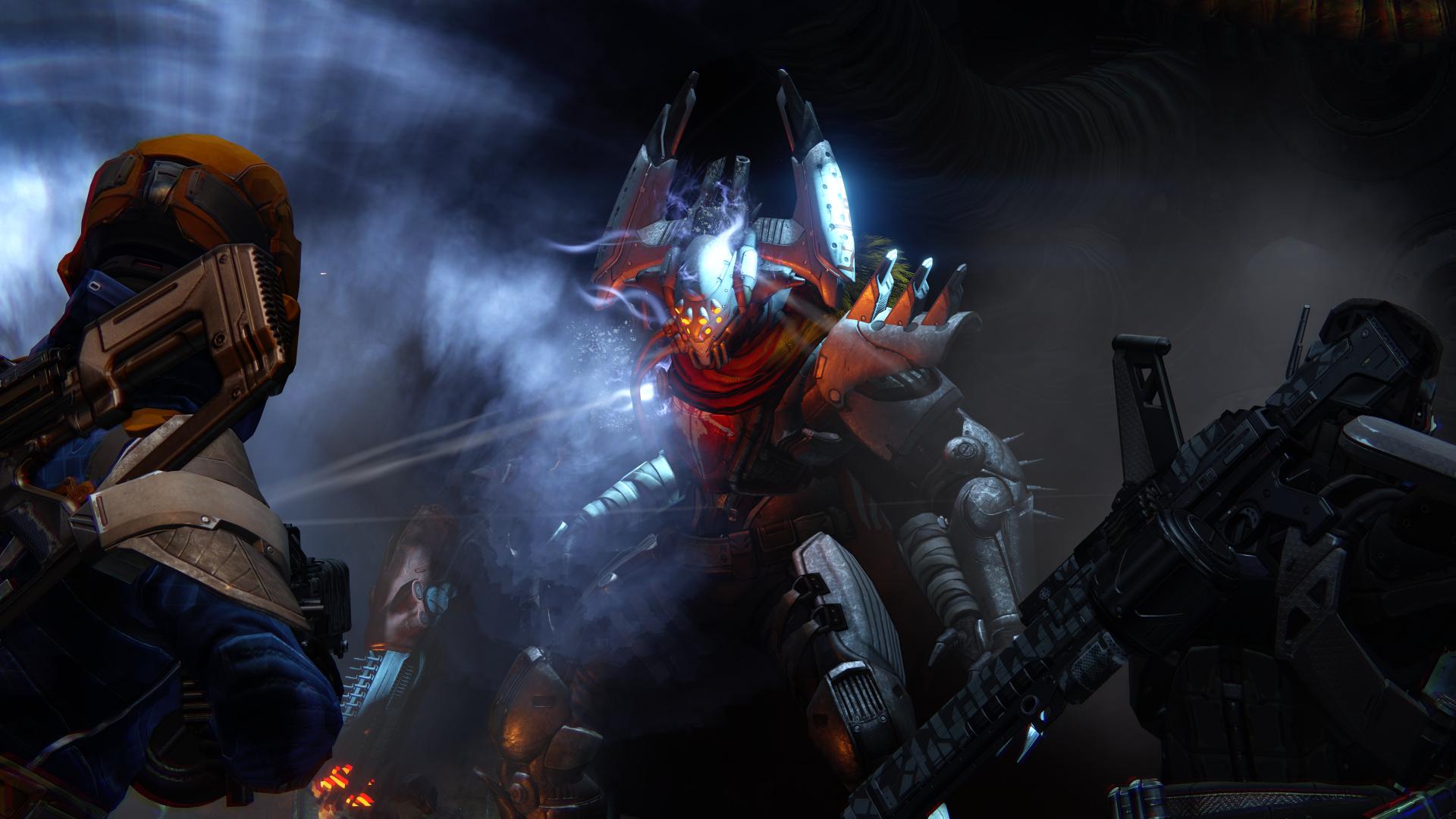
As with many games of its type – and despite Bungie’s protestations, there are indeed many games of its type – Destiny is better enjoyed with others. Once you hit later levels, you will unlock the Strike playlist. A Strike is a mission with increased difficulty and rewards, meant to be played in a team of three. The most successful trios will use headsets to communicate strategy and reinforce synergy, but in truth most are no more taxing than regular story missions – they are just a lot more fun. Stand-out moments become so commonplace that they don’t stand out any more, but that’s a good thing: it means it works.
At later levels, you’ll also unlock Raids. These are six-player, multi-layered missions designed to test you to the limit. But while they’re a great place to find better gear, they are restricted by the requirement that you play only with people on your friends list. Without an update to fix that, Raids will quickly become the bastion of the hardcore alone, filled with clans honing their skills and upping their gear before going online and dominating the relatively small-scale multiplayer. In contrast to the stellar shooting, the handling of raids suggests an overconfidence on Bungie’s part.
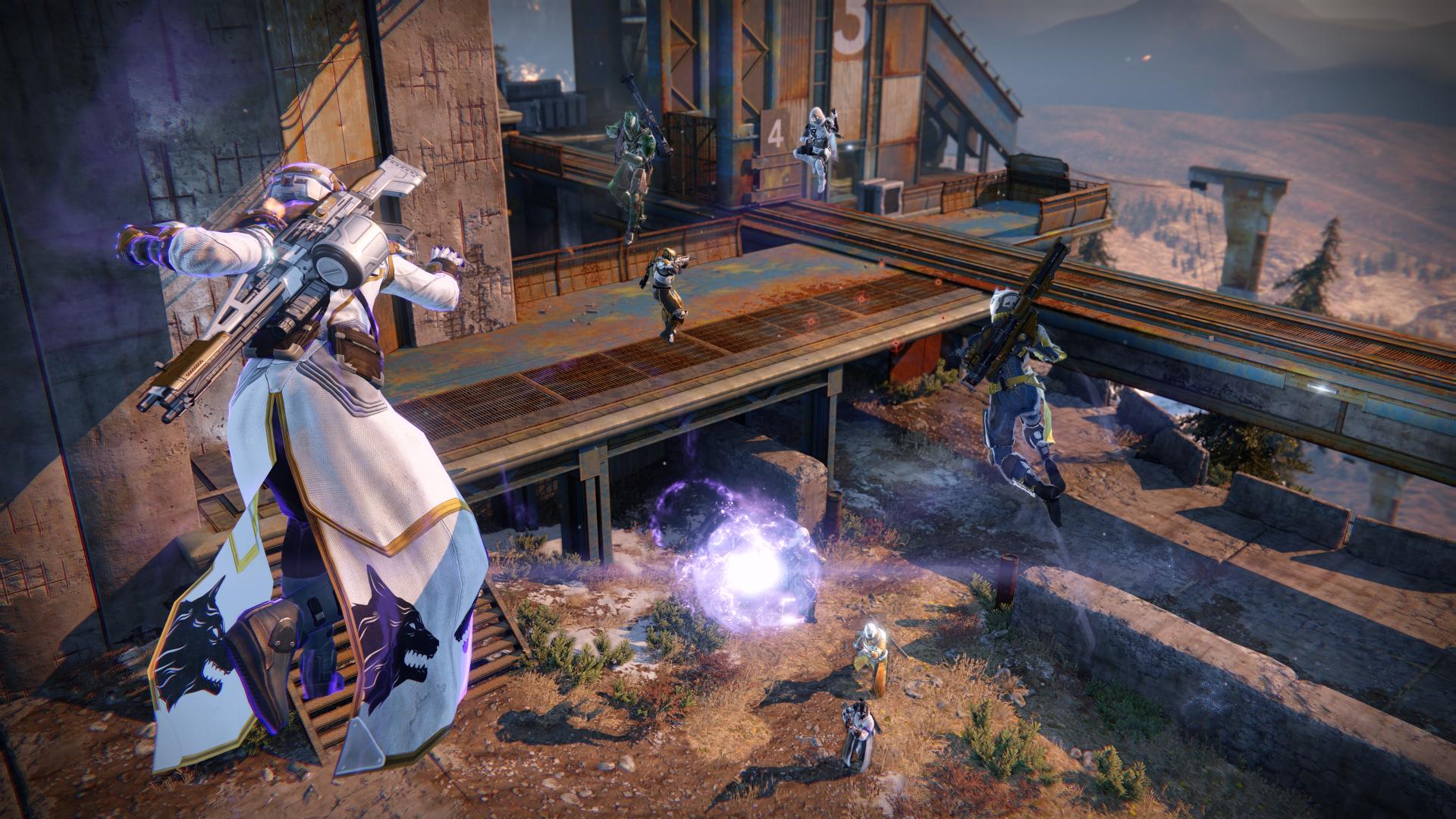
When juxtaposed beside the campaign offering, the competitive multiplayer seems somewhat dry. Because you take your character into the Crucible from the campaign, early forays into the arena are horrifically one-sided as you square up against level 25s and find yourself one-shotted before you can even get your sights up. With only a handful of modes containing nothing more exotic than Capture the Flag and Control (Destiny’s version of Hardpoint), the multiplayer feels half-baked. You can earn rewards specific to PvP, but they don’t do anything the campaign rewards don’t. The maps are large enough, reminiscent of some of Reach’s mid-sized arenas, but they aren’t varied enough when examined beside the campaign zones. There was enormous potential to do something exciting here that Bungie have squandered by delivering purpose-built maps for shooting other players in, none of which offer anything you haven’t seen before elsewhere.
From a technical standpoint Destiny walks a narrow line between astounding and over-reaching. While the servers held up admirably during the launch, I have been kicked five or six times mid-mission for no apparent reason. Small bugs and glitches are noticeable but excusable given the scale, but the loading times are often shocking. It’s not uncommon to wait a minute while transitioning between a mission zone and the tower hub, and the fact that in order to leave you must select “go to orbit” means you can’t just hit a button to go back if you forgot something; you have to reload the whole area again. Likewise, indulging in a spot of patrolling to earn marks and money (glimmer is the currency name) requires you to go to orbit when you’re done, even if you want to play a campaign mission or strike in the exact same zone. You have to quit and reload; you can’t just walk to a specific point. It’s irritating, more than anything, and really shouldn’t be happening.
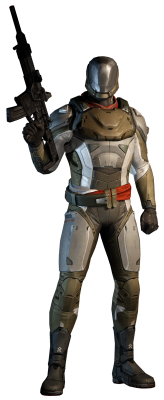 Some of it is made up for by the fact that Destiny looks incredible. The individual planets have their own personality and, while the worlds may feel curiously empty at times, they always look vibrant. The jungles of Venus are stunning, and the Moon has some truly breathtaking vistas, but it’s a beauty painted on to hide the cracks, and it doesn’t always succeed.
Some of it is made up for by the fact that Destiny looks incredible. The individual planets have their own personality and, while the worlds may feel curiously empty at times, they always look vibrant. The jungles of Venus are stunning, and the Moon has some truly breathtaking vistas, but it’s a beauty painted on to hide the cracks, and it doesn’t always succeed.
The decision to lock away the best content until you hit level twenty is a curious choice on Bungie’s part, and one that points to either lack of confidence or a worrying hubris. Not explaining what Vanguard or Crucible Marks are or how they’re earned until you can use them is fine, provided you don’t make them visible only for people to scratch their heads over.
What’s sad, is that Destiny could have been the world-beating mammoth Bungie envisioned it as and, perhaps foolishly, claimed it would be, but it falls short of their lofty aims. That said, there’s a sense when playing Destiny that this is a long-term investment. Only a week from launch and people have already hit that level cap and smashed right through it; they’ve mopped up the story mode, earned entire outfits of legendary gear and overcome every strike. Bungie have promised more content in the future, which would suggest a raising of the cap, more missions, new zones, new enemies, tweaks and updates to the existing formula that will, piece by piece, bring Destiny closer to the game we all hoped it was going to be.
But it’s not that game right now. Destiny is a confident, solid, sometimes stunningly beautiful shooter with RPG mechanics that add longevity and depth, and the beginnings of what could be an incredible online universe. But it feels like the tip of the glacier, and I’m not sure it’s a good thing to be more excited about what a game might one day be, than what it actually is.

VERY GOOD. An 8/10 is only awarded to a game we consider truly worthy of your hard-earned cash. This game is only held back by a smattering of minor or middling issues and comes highly recommended.
Review code provided by publisher.


